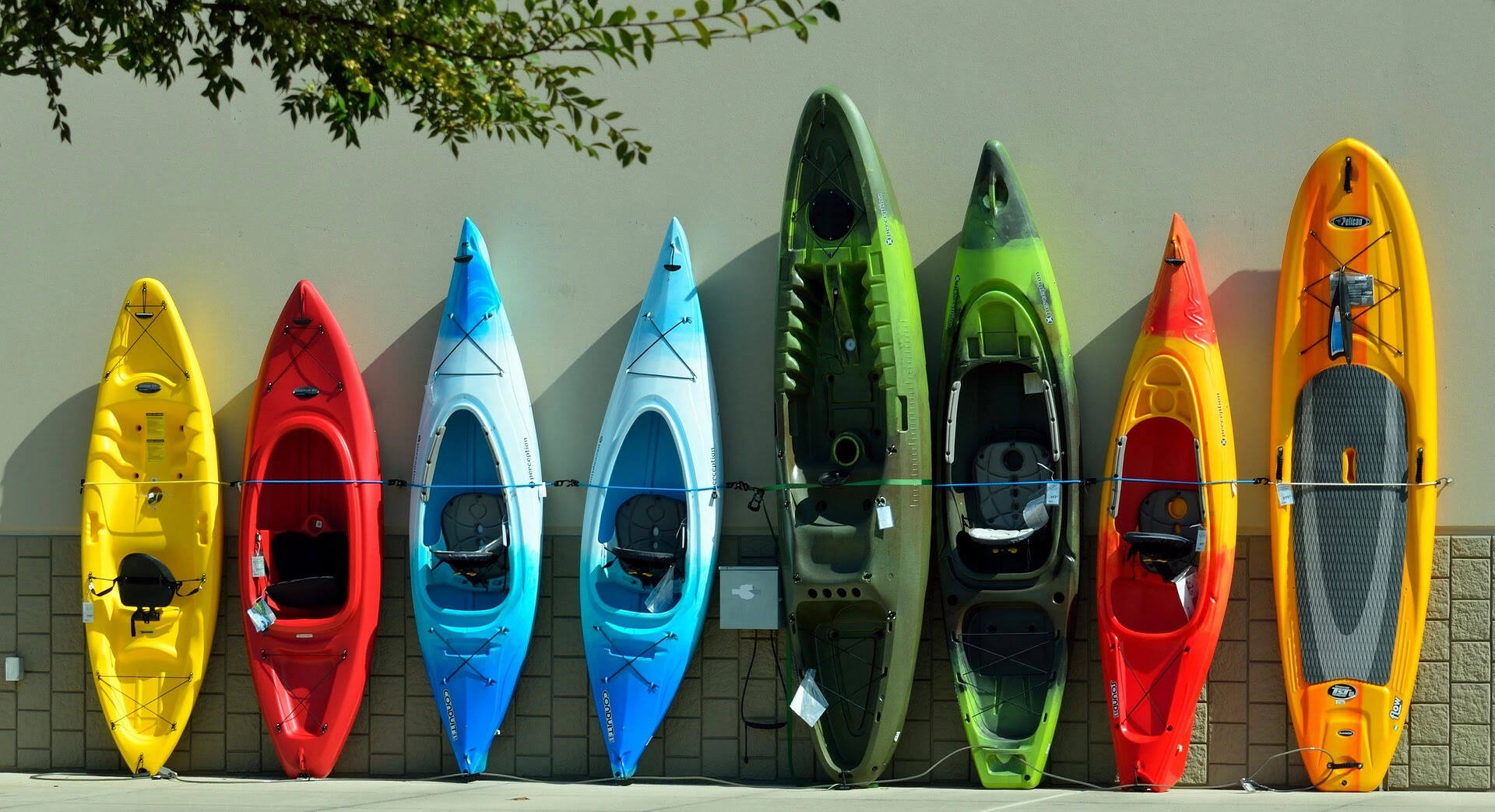

Articles
How To Store Kayaks
Modified: January 5, 2024
Learn the best ways to store and protect your kayaks with our informative articles. Find helpful tips and tricks to keep your kayaks in perfect condition.
(Many of the links in this article redirect to a specific reviewed product. Your purchase of these products through affiliate links helps to generate commission for Storables.com, at no extra cost. Learn more)
Introduction
When it comes to storing your kayak, proper storage methods are crucial to ensure its longevity and avoid unnecessary damage. Whether you have a sea kayak, whitewater kayak, or a fishing kayak, finding the right storage option can make a significant difference in preserving its condition.
Choosing a suitable storage method depends on various factors such as available space, climate conditions, and personal preferences. In this article, we will discuss different outdoor and indoor storage options, as well as provide essential tips for properly storing your kayak.
By following these guidelines, you can ensure that your kayak remains in top shape, ready for your next adventure on the water.
Key Takeaways:
- Proper kayak storage is crucial for maintaining its condition and performance. Consider factors like space, climate, and frequency of use to choose the right storage method for your kayak.
- Cleaning, drying, and finding the right storage location are essential steps to protect your kayak from damage. Regular inspections and proper support during storage help maintain its integrity.
Read more: How To Store Kayak
Choosing the Right Storage Method
When it comes to choosing the right storage method for your kayak, you need to consider several factors:
- Space: Assess the available space you have for storing your kayak. Do you have enough room indoors or do you need to find an outdoor solution? Keep in mind that improper storage in small or cramped spaces can lead to damage.
- Climate: Consider the climate conditions in your area. If you live in an area with extreme temperature fluctuations or high humidity, you may need to opt for storage options that provide better protection against these elements.
- Frequency of Use: Think about how frequently you plan to use your kayak. If you regularly go kayaking, you may prefer storage methods that allow for easy access and quick setup.
- Budget: Determine your budget for kayak storage. There are various storage options available at different price points, so you can find something that suits your needs without breaking the bank.
By considering these factors, you can narrow down your options and choose the storage method that works best for you and your kayak.
Outdoor Storage Options
If you have enough space outdoors and prefer to keep your kayak outside, there are several storage options to consider:
- Wall Mounts: Wall mounts are a popular choice for outdoor kayak storage. They allow you to securely hang your kayak on a wall or the side of a shed or garage. Wall mounts are typically made of durable materials such as steel or heavy-duty plastic and can support the weight of your kayak.
- Kayak Racks: Kayak racks are another outdoor storage option that provides a stable and organized solution. These racks come in various designs, including freestanding racks or racks that can be anchored to the ground. They often feature multiple tiers, allowing you to store multiple kayaks or other watercraft.
- Suspended Storage: Suspended storage systems, such as pulley systems or hanging straps, enable you to lift and hang your kayak from the ceiling or other overhead structures. This option is particularly useful for saving space and keeping your kayak safe from potential damage caused by ground-level elements.
When choosing an outdoor storage option, consider factors such as the durability of the materials, ease of installation, and protection against weather elements. Additionally, ensure that the storage option you choose can adequately support the weight and size of your kayak.
Remember to always secure your kayak properly to prevent it from being damaged by strong winds or other external factors.
Wall Mounts
Wall mounts are a popular and space-saving option for storing kayaks outdoors. They provide a secure and efficient way to store your kayak while keeping it off the ground and protecting it from potential damage.
When considering wall mounts for your kayak, there are a few key factors to keep in mind:
- Material and Durability: Look for wall mounts made of sturdy materials such as steel or heavy-duty plastic. These materials provide the necessary strength and stability to support the weight of your kayak.
- Installation: Choose wall mounts that are easy to install and come with all the necessary hardware. Make sure the mounts are securely attached to a solid structure, such as a garage wall or shed.
- Adjustability: Consider wall mounts that offer adjustable features to accommodate different kayak sizes and shapes. This flexibility allows you to securely store kayaks of varying dimensions without any issues.
- Protective Padding: Opt for wall mounts that have protective padding or rubber coating to prevent scratches or damage to the kayak’s hull. This is especially important if your kayak has a sensitive or fragile surface.
When installing wall mounts, make sure they are positioned at an appropriate height and angle to ensure easy access and safe storage. Be sure to follow the manufacturer’s instructions for proper installation and weight capacity recommendations.
Wall mounts not only help with storage but also allow you to display your kayak as a proud showcase piece. Just be sure to regularly inspect the wall mounts and check for any signs of wear or damage to ensure continued safe storage.
Kayak Racks
Kayak racks are a versatile and convenient option for outdoor kayak storage. These racks provide a stable and organized solution for storing multiple kayaks or other watercraft.
When considering kayak racks, here are a few key features to look for:
- Construction and Stability: Choose kayak racks that are sturdy and made of durable materials such as steel or heavy-duty plastic. The construction should be strong enough to support the weight of your kayaks without sagging or bending.
- Multiple Tiers: Opt for racks that offer multiple levels or tiers to accommodate multiple kayaks. This allows you to maximize your storage space and keep your kayaks neatly organized.
- Adjustability: Look for kayak racks that offer adjustable features, such as adjustable arms or straps, to accommodate kayaks of different sizes and shapes. This flexibility ensures a secure and snug fit for each kayak.
- Weather Protection: Consider racks with weather-resistant coatings or materials to provide protection against the elements. This is particularly important if you live in an area with harsh weather conditions.
When installing kayak racks, ensure that they are properly anchored to the ground or a solid structure to prevent any instability. It’s also important to evenly distribute the weight of the kayaks across the rack to maintain balance and prevent any tilting or tipping.
Kayak racks offer a convenient solution for storing kayaks outdoors, making it easy to access and secure your kayaks whenever you’re ready for your next adventure. Regularly inspect the racks for any signs of wear or damage and make any necessary repairs or replacements to ensure the continued safety and integrity of your kayak storage.
Read more: How To Store A Kayak
Suspended Storage
Suspended storage options, such as pulley systems or hanging straps, provide a unique and space-saving solution for outdoor kayak storage. These systems allow you to lift and hang your kayak from the ceiling or other overhead structures, keeping it off the ground and safe from potential damage.
When considering suspended storage for your kayak, here are a few key factors to keep in mind:
- Pulley Systems: Pulley systems utilize a combination of ropes and pulleys to hoist your kayak up and out of the way. These systems typically require some initial setup, including attaching the pulleys to a secure anchor point and measuring the appropriate length of rope. Once installed, you can easily raise and lower your kayak using the pulley system.
- Hanging Straps: Hanging straps are another option for suspended kayak storage. These straps are typically made of durable materials and are designed to support the weight of your kayak. They can be attached to an overhead structure, such as rafters or a sturdy beam, allowing you to hang the kayak securely.
- Space Considerations: Before choosing a suspended storage option, ensure that you have enough vertical clearance in your storage area. This will allow you to lift and lower your kayak without any obstructions.
- Proper Installation: When installing suspended storage systems, follow the manufacturer’s instructions carefully. Ensure that the anchor points are secure and can support the weight of your kayak. Regularly check the ropes or straps for signs of wear and replace them if necessary.
Suspended storage offers the advantage of saving valuable floor space while providing a convenient and secure way to store your kayak. It also helps to protect your kayak from potential damage caused by ground-level elements or accidental bumps.
Before using suspended storage, ensure that you are comfortable and familiar with the operation of the system. Practice lifting and lowering your kayak a few times to familiarize yourself with the process and ensure smooth and safe operation.
Keep in mind that suspended storage may not be suitable for all kayak sizes and weights. Consider the dimensions and weight capacity of the system you choose to ensure that it can safely support your kayak.
Indoor Storage Options
If you have limited outdoor space or prefer to store your kayak indoors, there are several indoor storage options to consider:
- Kayak Stands: Kayak stands are a popular choice for indoor storage. These stands provide a stable base for your kayak to rest on, keeping it upright and protecting it from damage. Kayak stands are available in various designs, including freestanding stands or stands that can be mounted to a wall or ceiling.
- Ceiling Hoists: Ceiling hoists are an efficient way to store your kayak overhead, utilizing the vertical space in your storage area. These systems typically consist of a pulley and rope system that allows you to easily lift and suspend your kayak from the ceiling. Ceiling hoists are ideal for high ceilings and provide convenient access to your kayak when needed.
- Kayak Carts: Kayak carts are excellent for indoor storage and offer the added benefit of portability. These carts feature wheels that allow you to easily move and position your kayak within your storage space. They are especially useful if you need to transport your kayak from one area to another.
When considering indoor storage options, it’s important to assess the available space and consider factors such as ease of access and protection against potential hazards. Additionally, ensure that the storage option you choose can adequately support the weight and size of your kayak.
Keep in mind that indoor storage helps protect your kayak from outdoor elements such as sunlight, extreme temperatures, and potential vandalism. However, ensure that your indoor storage area is well-ventilated and free from excessive moisture to prevent any potential damage such as mold or mildew growth.
Whichever indoor storage option you choose, always ensure that your kayak is properly secured and protected from any potential impacts or accidental movements. Regularly inspect your storage setup to identify any signs of wear or damage and make any necessary adjustments or repairs to maintain the integrity of your kayak storage.
Kayak Stands
Kayak stands are a popular and practical option for indoor kayak storage. These stands provide a stable and secure base for your kayak, keeping it upright and preventing any potential damage.
When considering kayak stands for indoor storage, here are a few key points to keep in mind:
- Stability: Look for kayak stands that offer a solid and stable base. Stands made of sturdy materials such as steel or heavy-duty plastic are ideal for providing the necessary support for your kayak.
- Design and Size: Consider the design and size of the kayak stand to ensure it accommodates the dimensions of your kayak. Some stands are adjustable, allowing you to customize the fit for your specific kayak.
- Freestanding or Wall-Mounted: Decide whether you prefer a freestanding kayak stand that can be placed on the floor or a wall-mounted stand for space-saving benefits. Wall-mounted stands can be attached to a wall or ceiling to maximize your storage space.
- Padding and Protection: Opt for kayak stands that have padding or cushioning on the contact points to prevent any scratches or damage to the kayak’s hull. This is especially important if your kayak has a sensitive or fragile surface.
Installing a kayak stand is typically straightforward and requires minimal effort. Be sure to follow the manufacturer’s instructions for proper installation and weight capacity recommendations.
Using a kayak stand for indoor storage not only keeps your kayak protected but also provides easy access when you’re ready to hit the water. It eliminates the need to lift the kayak off the ground, reducing the risk of accidental bumps or scratches.
Regularly inspect the kayak stand to ensure it remains in good condition. Check for any signs of wear or damage, and replace any worn-out parts as needed. By properly maintaining the kayak stand, you can ensure the longevity of both the stand and your kayak.
Store your kayaks in a dry, shaded area to prevent sun damage. Use a kayak rack or hoist to keep them off the ground and protect them from potential damage.
Ceiling Hoists
Ceiling hoists are an efficient and space-saving option for indoor kayak storage. These systems utilize the vertical space in your storage area, allowing you to lift and suspend your kayak from the ceiling.
When considering ceiling hoists for your kayak, here are a few key points to keep in mind:
- Weight Capacity: Check the weight capacity of the ceiling hoist to ensure it can safely support the weight of your kayak. Different hoists have varying weight limits, so make sure you select one that can handle the load.
- Pulley System: The ceiling hoist typically utilizes a pulley system with ropes or straps to lift and lower your kayak. Ensure that the pulleys are smooth and easy to operate for convenient storage and retrieval of your kayak.
- Installation: Proper installation is vital for the safety and effectiveness of the ceiling hoist. Follow the manufacturer’s instructions carefully and ensure that the hoist is securely attached to a suitable ceiling structure, such as a beam or joist.
- Accessibility: Consider the accessibility of your kayak when using a ceiling hoist. Ensure that the hoist allows for easy lowering and raising of the kayak, allowing you to retrieve it when needed without any struggles.
Ceiling hoists are particularly beneficial for those with limited floor space or garages with high ceilings. They keep the kayak elevated and out of the way, maximizing your storage area and keeping your kayak safe from potential damage.
Take precautions to prevent any accidental movements or swinging of the kayak while it is suspended. This can be done by properly securing the kayak with straps or ropes, as well as ensuring that the hoist system is properly tensioned and stable.
Regularly inspect the ceiling hoist and its components for any signs of wear or damage. Check the ropes or straps and replace them if they show signs of fraying or weakening. By maintaining the ceiling hoist, you can ensure the safety and longevity of both the hoist and your kayak.
Read more: How To Store Kayak In Apartment
Kayak Carts
Kayak carts are a versatile and portable option for indoor kayak storage. These carts feature wheels that allow you to easily move and position your kayak within your storage space or transport it to and from your vehicle.
When considering kayak carts for indoor storage, here are a few key points to keep in mind:
- Portability: Look for kayak carts that are lightweight and easy to maneuver. Opt for carts with sturdy wheels that can handle various terrains, whether it’s indoors or outdoors.
- Adjustability: Consider a kayak cart with adjustable features that allow you to customize the fit for your specific kayak. Look for carts with adjustable straps or padding to securely hold your kayak in place.
- Folding Feature: If space is limited in your storage area, choose a kayak cart with a folding feature. This allows you to collapse the cart for easy storage when not in use.
- Weight Capacity: Check the weight capacity of the kayak cart to ensure it can support the weight of your kayak. Different carts have varying weight limits, so be sure to choose one that can handle your kayak’s load.
Kayak carts provide the convenience of easily moving and positioning your kayak within your storage area, making it easier to access and organize your gear. They are also beneficial if you need to transport your kayak down a dock or over uneven terrain to reach the water.
Ensure that your kayak is securely strapped or fastened to the cart before moving it to prevent any accidental slips or damage. Regularly check the condition of the cart, including the wheels and straps, and replace any worn-out or damaged parts to ensure safe and efficient storage.
By utilizing a kayak cart for indoor storage, you can easily maneuver your kayak and optimize your storage space, making it a practical and convenient option for kayak enthusiasts.
Essential Tips for Proper Kayak Storage
Proper kayak storage is essential to ensure the longevity of your kayak and preserve its condition for future adventures. Here are some essential tips to follow for proper kayak storage:
- Cleaning and Drying Your Kayak: Before storing your kayak, make sure to thoroughly clean it with mild soap and water to remove any dirt, debris, or saltwater residue. After cleaning, allow your kayak to dry completely to prevent the growth of mold or mildew.
- Finding the Right Storage Location: Choose a storage location that provides protection from direct sunlight, extreme temperatures, and high humidity. If possible, store your kayak indoors to minimize exposure to the elements and prevent fading or warping of the hull.
- Protecting Your Kayak from Damage: To prevent damage during storage, avoid placing heavy objects on top of your kayak and ensure that it is securely supported to prevent any bending or warping. Use padding or cushioning at contact points to prevent scratches or damage to the hull.
- Regular Inspections: Regularly inspect your kayak for any signs of wear, damage, or pests. Look for cracks, dents, or any issues with the hull, handles, or straps. Address any problems promptly to prevent further damage.
- Securing Your Kayak: Properly secure your kayak during storage to prevent it from accidental movements or falls. Use straps, bungee cords, or other secure fasteners to keep the kayak in place and minimize any potential damage.
- Rotate the Kayak: If you have a kayak stored for an extended period, consider rotating its position every few months to prevent any pressure points or stress on specific areas of the hull.
- Regular Maintenance: Keep up with regular maintenance tasks such as inspecting and lubricating the hatch seals, checking and tightening the hardware, and ensuring the integrity of the carrying handles and rudders (if applicable).
By following these essential tips for proper kayak storage, you can ensure that your kayak remains in excellent condition and ready for your next paddling adventure. Remember that the longevity and performance of your kayak depend on how well you store and maintain it.
Cleaning and Drying Your Kayak
Before storing your kayak, it is crucial to clean and dry it properly. This ensures that your kayak remains in good condition and prevents the growth of mold, mildew, or any damage caused by dirt or saltwater residue. Here are some essential tips for cleaning and drying your kayak:
- Rinse Off: Start by rinsing your kayak with fresh water. Use a hose or a bucket of clean water to remove any loose dirt, sand, or debris. Make sure to rinse both the interior and exterior of the kayak.
- Use Mild Soap: After rinsing, use a mild soap specifically formulated for kayaks or a gentle dish soap. Avoid using harsh chemicals or abrasive cleaners that can damage the kayak’s surface. Gently scrub the kayak with a soft sponge or cloth to remove any stubborn dirt or grime.
- Pay Attention to Joints and Seams: Pay close attention to the joints, seams, and crevices of your kayak as these areas can accumulate dirt and debris. Use a soft brush or an old toothbrush to clean these hard-to-reach spots.
- Rinse Again: After cleaning, thoroughly rinse the kayak with fresh water to remove any soap residue. This step is essential to prevent any chemical buildup on the kayak’s surface.
- Dry Completely: Allow your kayak to dry completely before storing it. This helps prevent the growth of mold or mildew. If possible, place the kayak in a well-ventilated area with good air circulation. Avoid direct sunlight, as prolonged exposure to UV rays can fade or damage the kayak’s color and material.
- Tip: Storage Draining: While drying, position your kayak to ensure that any remaining water inside the kayak drains out completely. This can be done by propping the kayak at a slight angle or using foam blocks to elevate one end.
- Protective Cover: Consider using a protective cover or a breathable storage bag to shield your kayak from dust, dirt, and potential scratches during storage. Make sure the cover allows proper ventilation to prevent moisture buildup.
By following these steps, you can maintain the cleanliness and integrity of your kayak, ensuring that it remains in excellent condition and ready for your next paddling excursion. Regular cleaning and proper drying after each use contribute to the overall longevity and performance of your kayak.
Finding the Right Storage Location
Choosing the right storage location for your kayak is crucial to ensure its longevity and protect it from potential damage. Here are some important considerations when finding the right storage location:
- Indoor or Outdoor: Decide whether you have the option to store your kayak indoors or if outdoor storage is your only choice. Indoor storage provides better protection from the elements, such as direct sunlight, extreme temperatures, and moisture.
- Climate Control: If possible, choose a storage location that has climate control, especially if you live in an area with fluctuating temperature and high humidity. Extreme temperature changes and moisture can damage the integrity of your kayak over time.
- Adequate Space: Ensure that the storage location has enough space to accommodate the length and width of your kayak. Measure the dimensions of your kayak and choose a storage spot that provides ample room to prevent any accidental damage when moving or accessing the kayak.
- Protection from Sunlight: If storing your kayak outdoors, look for a spot that offers some shade or use a protective cover to shield your kayak from direct sunlight. Prolonged exposure to UV rays can cause fading and degradation of the kayak’s color and material.
- Stable Surface: Whether indoors or outdoors, ensure that the storage surface is stable and level to prevent any tipping or accidental falls. Uneven surfaces can lead to stress points and potential damage to your kayak.
- Accessibility: Consider how easily accessible the storage location is. You’ll want to be able to retrieve your kayak conveniently for your paddling adventures. A location that allows easy access and maneuverability is ideal.
- Security Measures: If storing your kayak outdoors, consider additional security measures such as locks or surveillance to protect it from theft or vandalism. Indoor storage areas may already have built-in security measures, but it’s always a good idea to assess the security of the storage location.
By finding the right storage location, you can provide your kayak with the protection it needs, ensuring its longevity and helping to preserve its performance for years to come. Regularly inspect the storage area for any potential hazards or issues, and make any necessary adjustments or improvements to maintain a safe and secure storage space for your kayak.
Read more: How To Store Kayak In Garage
Protecting Your Kayak from Damage
Protecting your kayak from potential damage during storage is essential to maintain its condition and performance. Here are some important tips to help protect your kayak:
- Proper Support: Ensure that your kayak is properly supported during storage to prevent warping or stress on the hull. Use kayak stands, foam blocks, or padded racks designed specifically for kayak storage. Avoid placing excessive weight on top of the kayak, as it can cause deformation.
- Padding and Cushioning: Use padding or cushioning at contact points to prevent scratches or damage to the kayak’s hull. This is especially important when using racks, stands, or any other storage systems that come into direct contact with the kayak.
- Protective Cover: Consider using a protective cover or storage bag to shield your kayak from dust, dirt, and potential scratches. Opt for a cover made with breathable material to prevent moisture buildup and allow proper ventilation.
- Keep Away from Sharp Objects: Store your kayak away from sharp objects or any items that can potentially puncture or scratch the hull. Be mindful of any tools, equipment, or other stored items that may accidentally come in contact with the kayak and cause damage.
- Avoid Extreme Temperatures: Protect your kayak from extreme temperatures, both hot and cold. Prolonged exposure to high temperatures can cause warping or deformation, while freezing temperatures can lead to cracking. Choose a storage location that maintains a relatively stable temperature.
- Avoid Exposure to Moisture: It’s crucial to keep your kayak dry during storage. Moisture can cause mold, mildew, or corrosion. If storing your kayak outdoors, ensure it is properly covered to protect it from rain, snow, and other sources of moisture. If storing indoors, a well-ventilated area helps prevent any moisture buildup.
- Regular Inspections: Periodically inspect your kayak for any signs of wear, damage, or pests. Check for cracks, dents, or any issues with the hull, handles, or fittings. Address any problems promptly to prevent further damage.
- Secure Storage: Securely store your kayak to prevent accidental movements or falls. Use straps, bungee cords, or other secure fasteners to keep the kayak in place and minimize any potential damage.
By following these protective measures, you can significantly reduce the risk of damage to your kayak during storage. Proper care and attention will help extend the life of your kayak, ensuring that it remains in excellent condition and ready for your next paddling adventure.
Conclusion
Proper kayak storage is essential to maintain the condition and performance of your kayak. Whether you choose outdoor or indoor storage, there are various options available to suit your needs. By considering factors such as space availability, climate conditions, and frequency of use, you can choose the right storage method for your kayak.
Outdoor storage options, such as wall mounts, kayak racks, and suspended storage, provide convenience and organization while keeping your kayak safe from potential ground-level damage. Indoor options like kayak stands, ceiling hoists, and kayak carts offer protection from the elements and maximize storage space.
Cleaning and drying your kayak before storage helps prevent mold and damage caused by dirt or saltwater residue. Finding the right storage location, ensuring proper support, and protecting your kayak from potential hazards are crucial steps to maintain its integrity.
Regular inspections, maintenance routines, and securing your kayak properly during storage are additional measures to keep your kayak in excellent condition. By following these guidelines, you can enjoy your kayak for many years to come.
Remember, each kayak is unique, so it’s essential to refer to the manufacturer’s guidelines for specific storage requirements and recommendations.
Investing time and effort into proper kayak storage will prolong the life of your kayak, preserve its performance, and ensure countless memorable experiences on the water. So, take care of your kayak, choose the right storage method, and get ready for your next adventure!
Frequently Asked Questions about How To Store Kayaks
Was this page helpful?
At Storables.com, we guarantee accurate and reliable information. Our content, validated by Expert Board Contributors, is crafted following stringent Editorial Policies. We're committed to providing you with well-researched, expert-backed insights for all your informational needs.

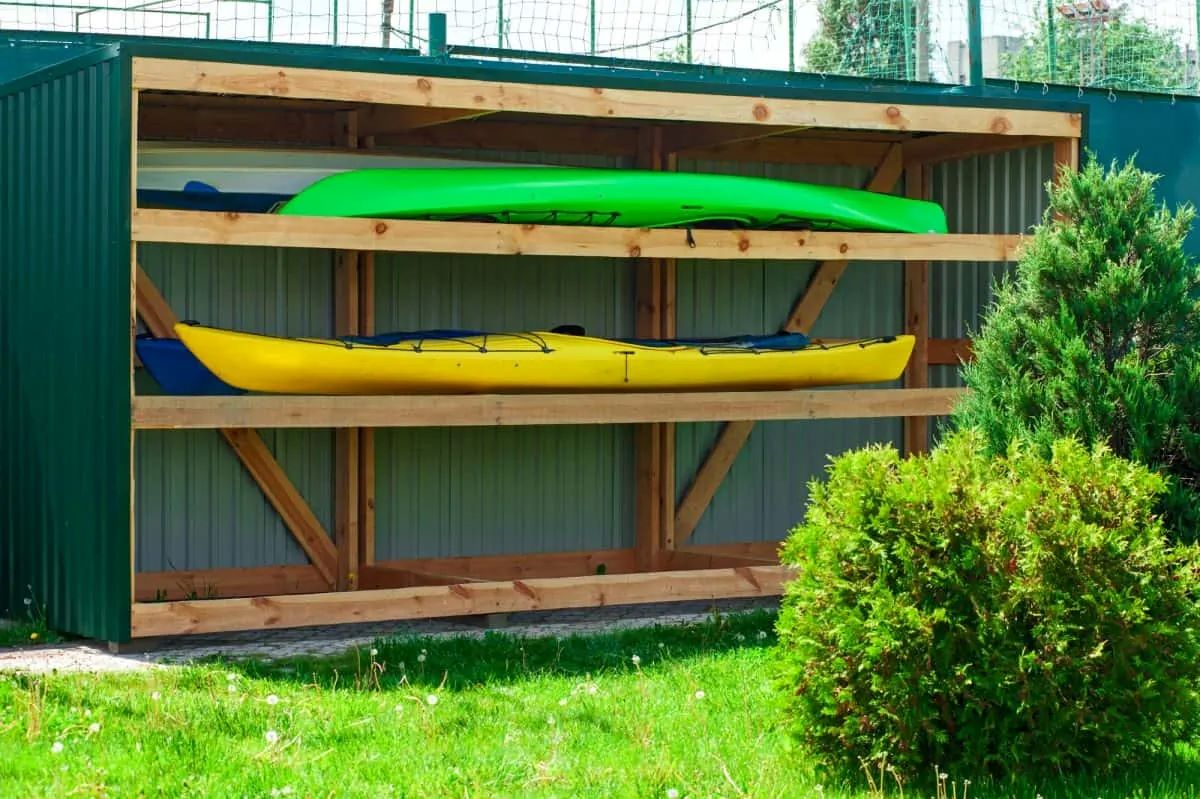
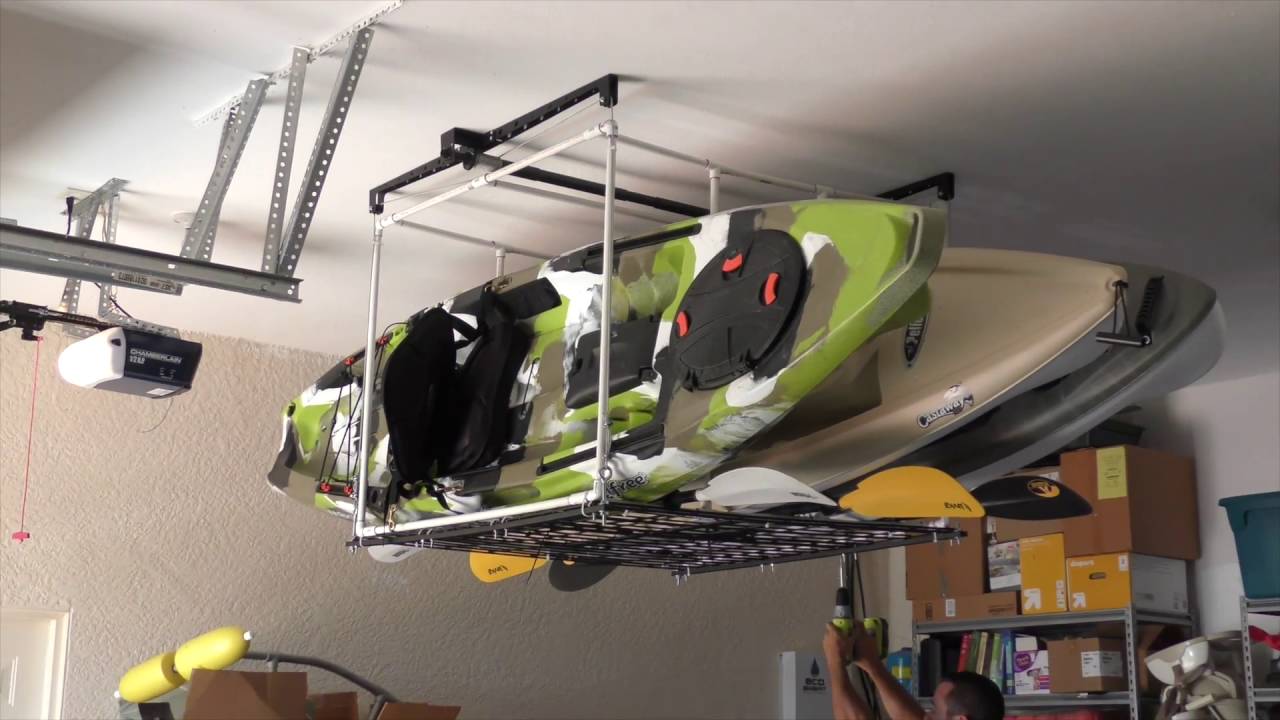
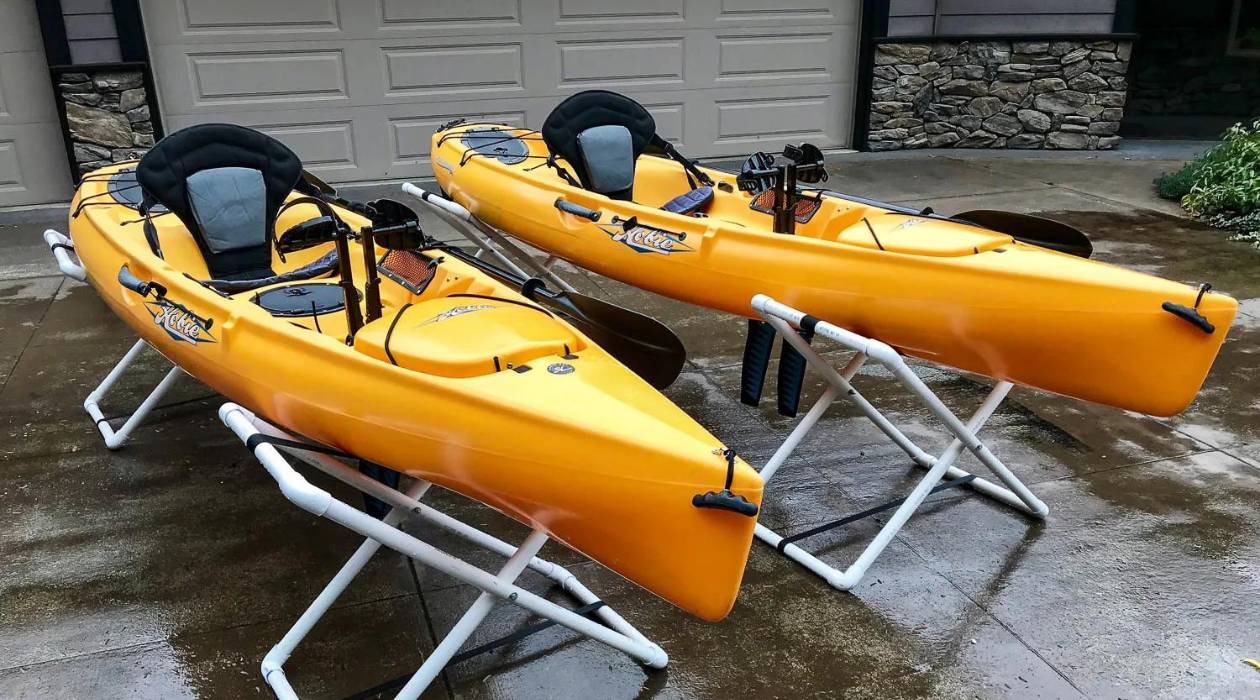
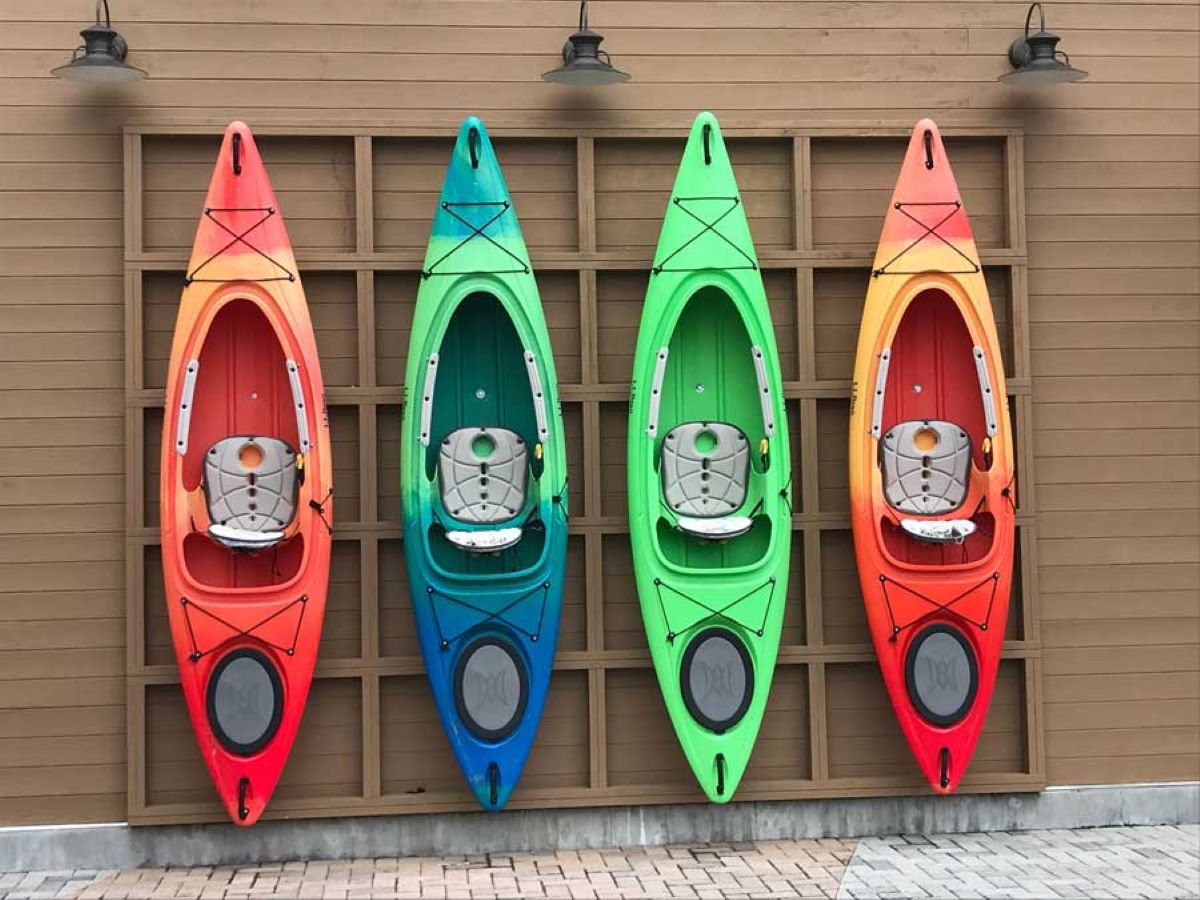
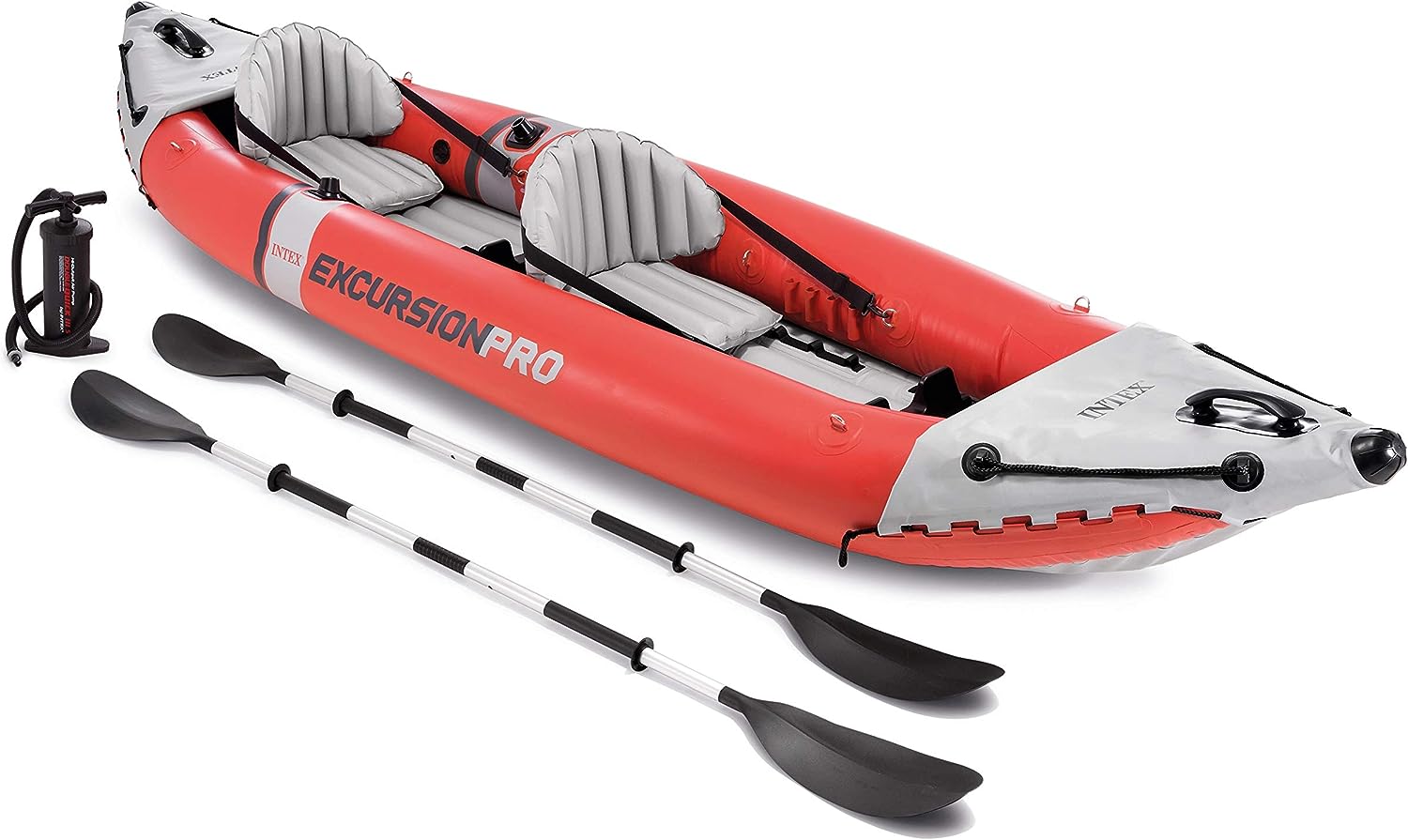
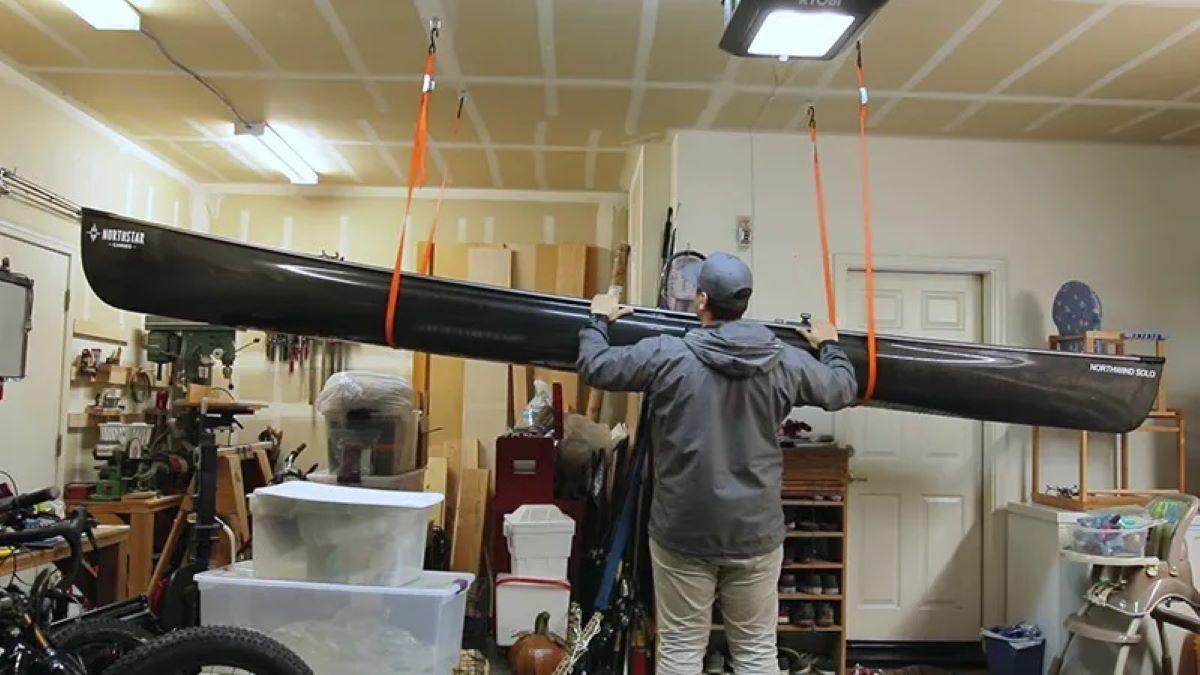
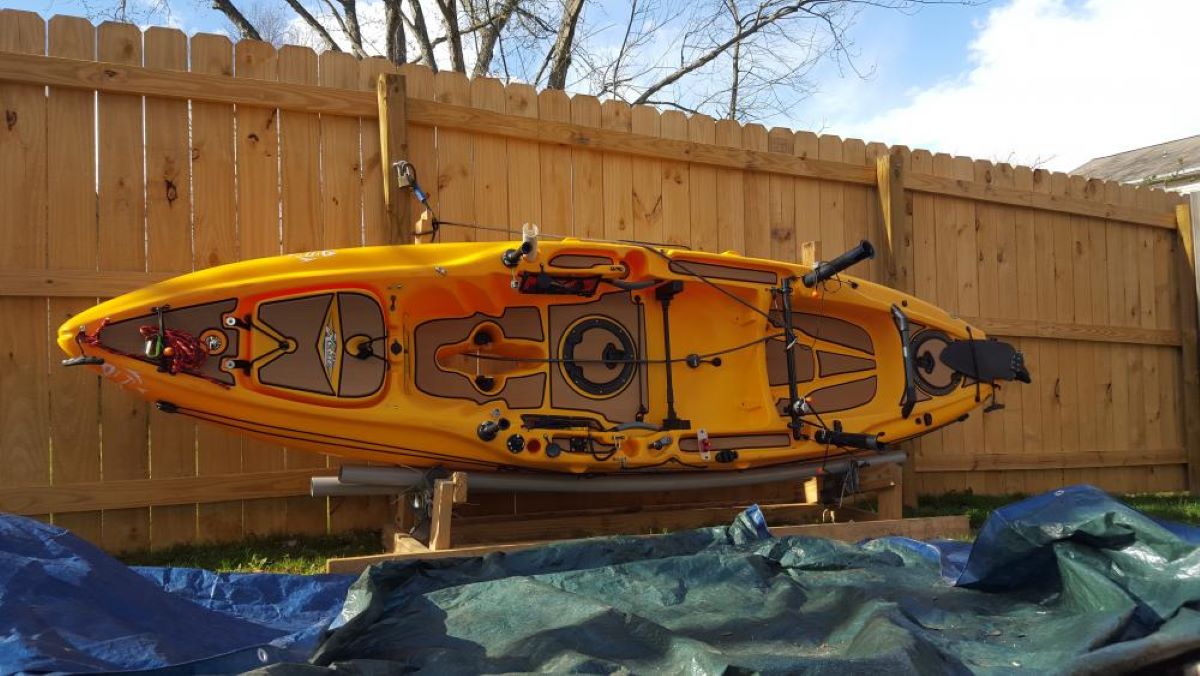
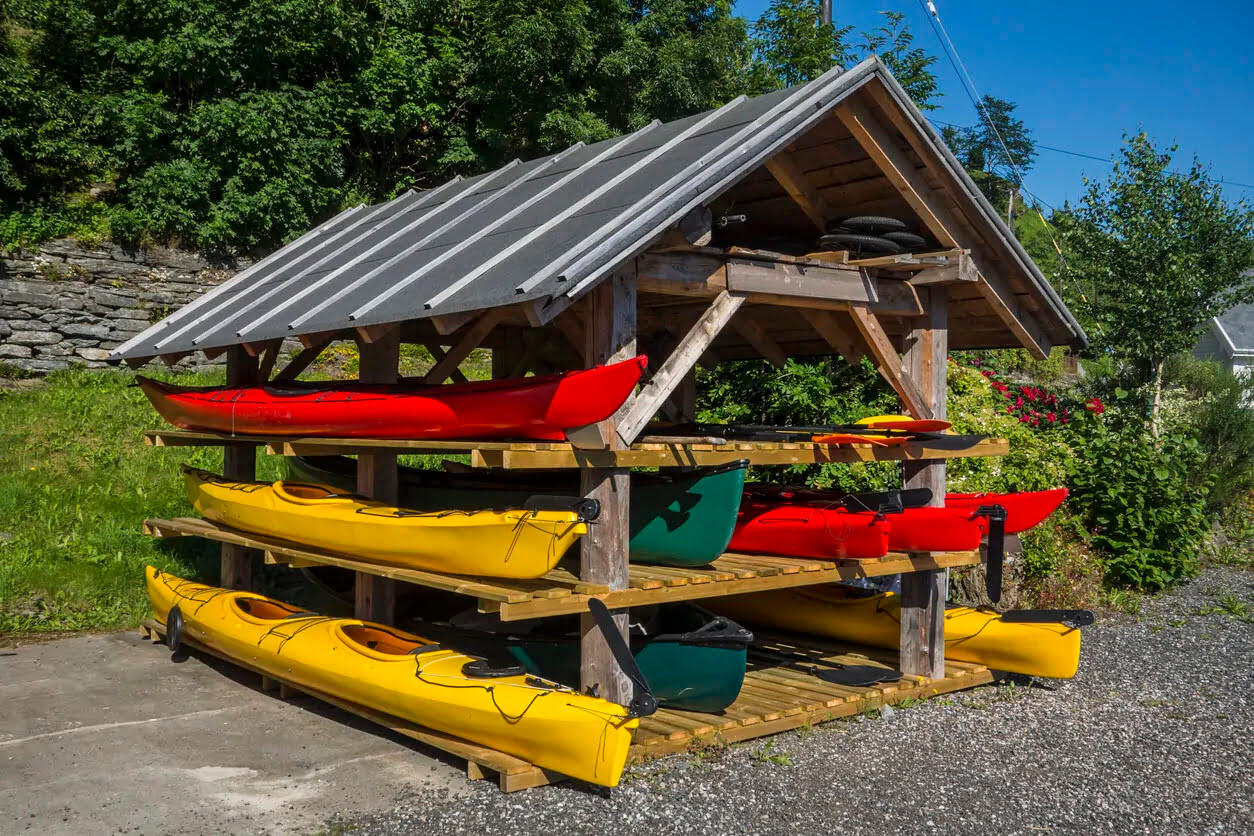
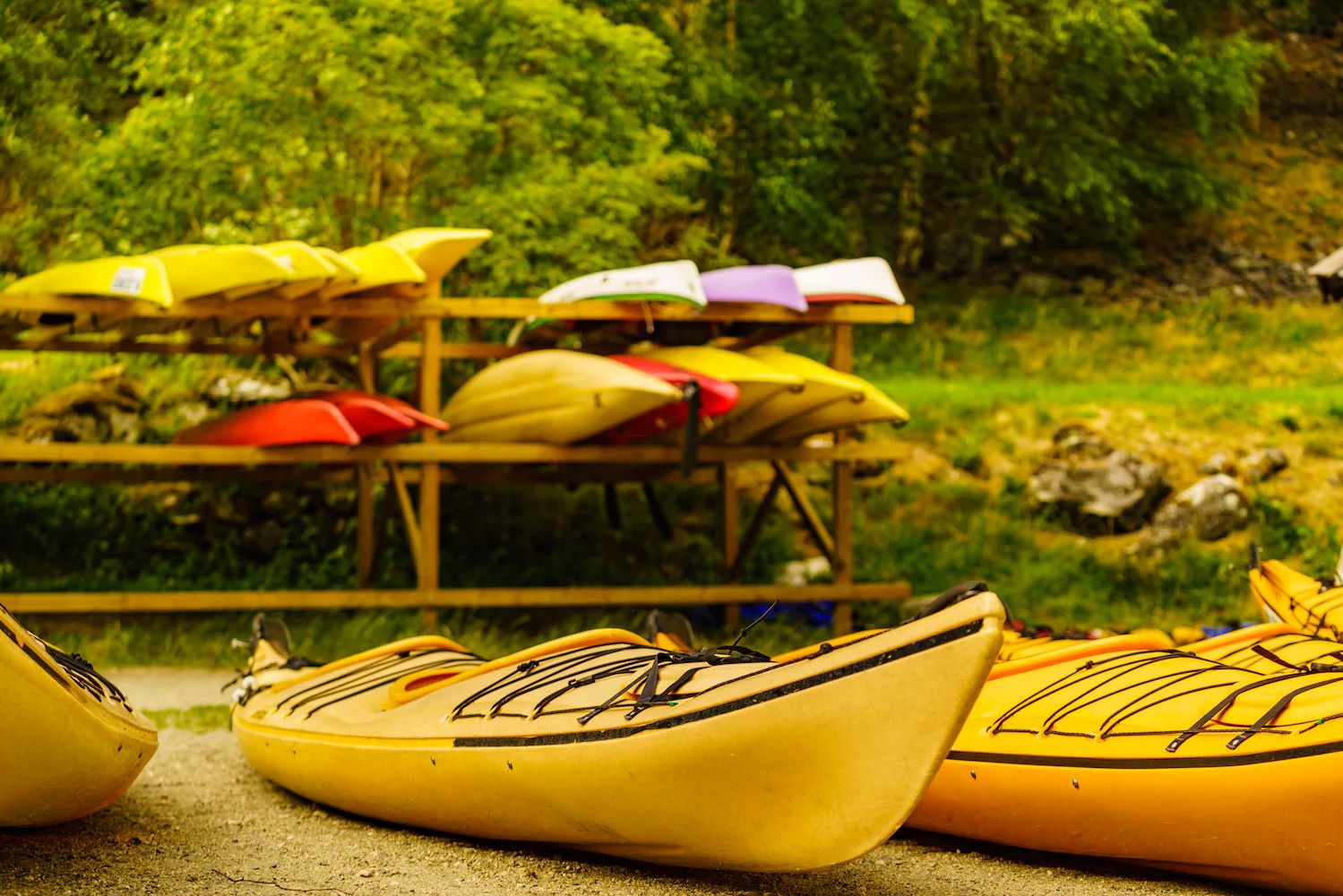
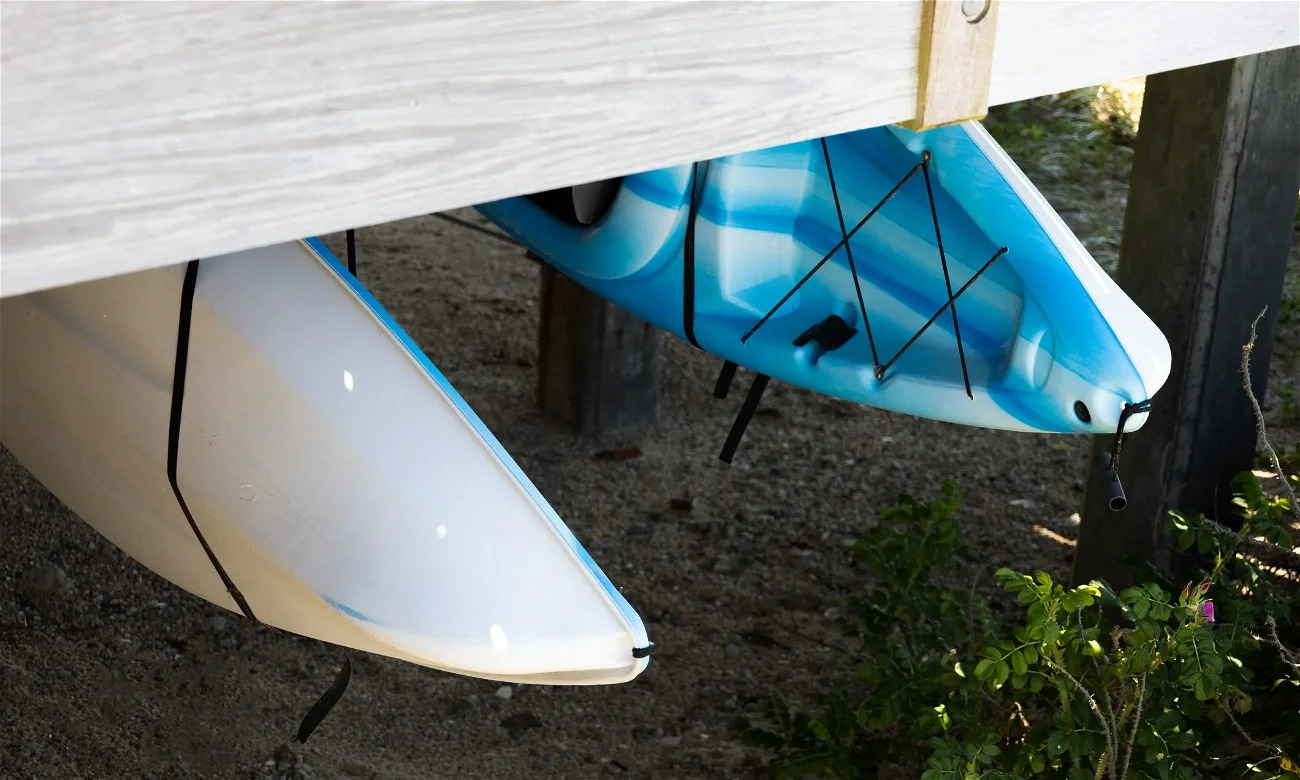
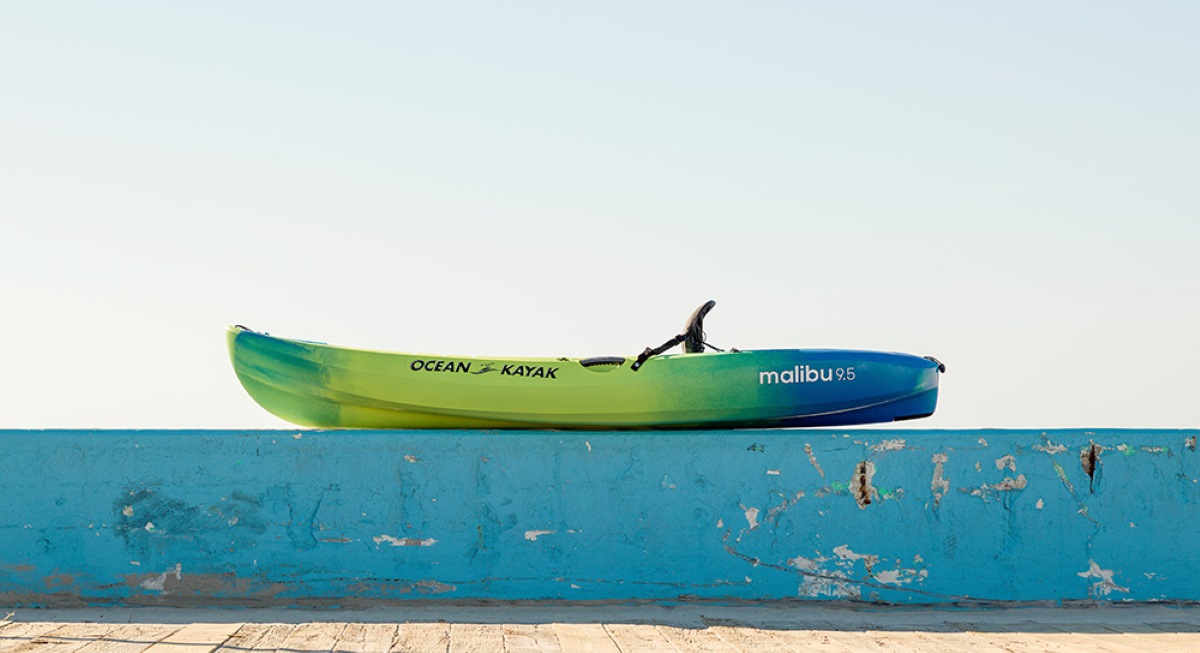

0 thoughts on “How To Store Kayaks”